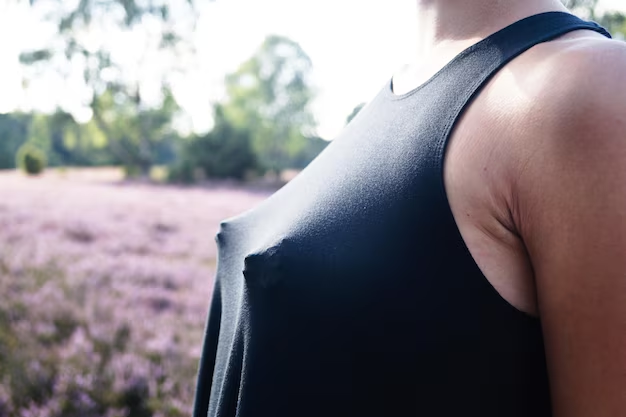Discovering How I Managed My Vitiligo: Insights for Your Journey
Imagine waking up one day to find patches of your skin gradually losing their pigmentation. This transformation could potentially affect your self-esteem and social experiences. For many people living with vitiligo, this scenario is a reality. But navigating vitiligo doesn't have to be a lonely or discouraging journey. Here, I’ll share insights on how I managed my vitiligo, offering valuable pointers that might help guide your path as well.
Understanding Vitiligo: A Brief Overview
Before delving into personal experiences and strategies, it's crucial to understand what vitiligo is. Vitiligo is a long-term skin condition characterized by patches of skin losing their pigment. This occurs when the melanocytes within the skin are destroyed. While vitiligo is not life-threatening or contagious, it can significantly affect the psychological and emotional well-being of those impacted.
Common Triggers and Causes
Though the exact cause of vitiligo remains unknown, several factors might contribute to its onset and progression:
- Genetic factors: Family history can play a role.
- Autoimmune responses: The body's immune system attacking its cells.
- Environmental triggers: Stress, sunburn, or exposure to industrial chemicals.
Personal Journey: Steps I Took to Manage Vitiligo
Embracing Acceptance and Building Confidence
The first step in managing vitiligo effectively is embracing acceptance. Understanding that vitiligo is just one aspect of who you are can go a long way in boosting self-confidence. Over time, I learned to appreciate the uniqueness of my skin, rather than allowing it to define my self-worth. Remember, your skin doesn’t dictate your capabilities or value.
Helpful Tip: Practice positive self-talk and engage with supportive communities online or in-person to share experiences and build self-esteem.
Exploring Natural Remedies
While there is no guaranteed cure for vitiligo, certain natural remedies are worth considering. Here's what I found helpful:
- Dietary adjustments: Incorporating a balanced diet rich in antioxidants can be beneficial. Foods like oranges, berries, and leafy greens helped me boost overall skin health.
- Herbal applications: Some people turn to natural oils like coconut or neem oil, which may help soothe skin and reduce the appearance of patches.
- Stress reduction techniques: Practices such as yoga or meditation can lower stress levels, potentially impacting the progression of vitiligo.
Consult with Dermatologists
Collaborating with a dermatologist can be incredibly valuable. They can provide professional assessments and tailor treatments to your needs, considering options like:
- Topical treatments: Corticosteroids or vitamin D analogs might help re-pigment the skin.
- Light therapy: Phototherapy can stimulate melanocyte production.
Reminder: Always conduct thorough discussions with healthcare providers before starting any treatment to ensure it's appropriate for you.
Maintaining Mental Health and Well-being
Living with vitiligo can sometimes feel isolating, but maintaining mental balance is crucial for a fulfilling life. Here's how I managed my mental health alongside my skin condition:
Support Networks and Advocacy
Connecting with others who understand your experience is invaluable. Engaging with vitiligo support groups allows for the exchange of thoughts and strategies. Additionally, participating in awareness campaigns offers empowerment not just for yourself but also for others experiencing vitiligo.
Professional Counseling
If feelings of anxiety or depression arise, seeking professional counseling may assist in managing these emotions. Cognitive behavioral therapy (CBT) has supported many in rethinking negative thought patterns associated with physical appearance.
Self-Care Practices
Engaging in consistent self-care practices is vital. Whether it's setting aside time each day for physical exercise, pursuing hobbies, or indulging in skincare routines, these activities provide comfort and foster resilience.
Lifestyle Adjustments for Healthy Living
In addition to mental and skin health practices, overall lifestyle choices greatly impact the management of vitiligo. Here’s what worked for me:
Sun Protection
The lack of melanin in affected areas makes them vulnerable to sun damage. Therefore, safeguarding your skin against harmful UV rays is pivotal. Use broad-spectrum sunscreen daily, wear protective clothing, and seek shade when outdoors.
Balanced Nutrition
Fueling the body with proper nutrients supports general health and may positively affect skin conditions. Ensure to integrate:
- Fruits and vegetables: High in vitamins and antioxidants.
- Omega-3 fatty acids: Found in fish or chia seeds, supporting skin elasticity.
- Hydration: Ample water intake assists in maintaining skin moisture and texture.
Regular Physical Activity
Engaging in regular physical exercise enhances blood circulation and releases endorphins, contributing to improved skin function and mental well-being.
Navigating Common Myths: Fact Verses Fiction
Vitiligo, like many medical conditions, is surrounded by various myths and misconceptions. Let’s debunk some of these to provide clarity:
Myth 1: Vitiligo is contagious.
Fact: Vitiligo is not contagious. You cannot “catch” vitiligo from another person.
Myth 2: Tanning beds help re-pigment the skin.
Fact: Tanning beds can actually worsen vitiligo by increasing the risk of skin damage.
Myth 3: Only people with dark skin are affected.
Fact: Vitiligo affects people of all skin colors equally, though it may be more visible in individuals with darker skin.
Final Reflections and Empowerment Insights
Living with vitiligo can be challenging, but by focusing on acceptance, proactive skin management, mental health practices, and lifestyle adjustments, you can lead a fulfilling and empowered life. Remember, every individual's journey with vitiligo is unique, and what works for one person may not work for another. It’s about finding and embracing what works best for you.
Summary of Key Tips and Takeaways:
- Acceptance and Self-Love: Embrace your uniqueness. 🌟
- Natural Remedies: Explore dietary adjustments and herbal applications. 🌿
- Professional Guidance: Consult dermatologists and mental health professionals. 🩺
- Mental Well-being: Connect with support networks and practice self-care. 🧘♀️
- Lifestyle Habits: Prioritize sun protection, nutrition, and exercise. 🍏
Navigating vitiligo is not a lonely path, and by empowering yourself with knowledge and a supportive community, the journey can become an enriching one. Remember, you are more than your skin, and embracing every aspect of yourself is the most authentic way to thrive.
